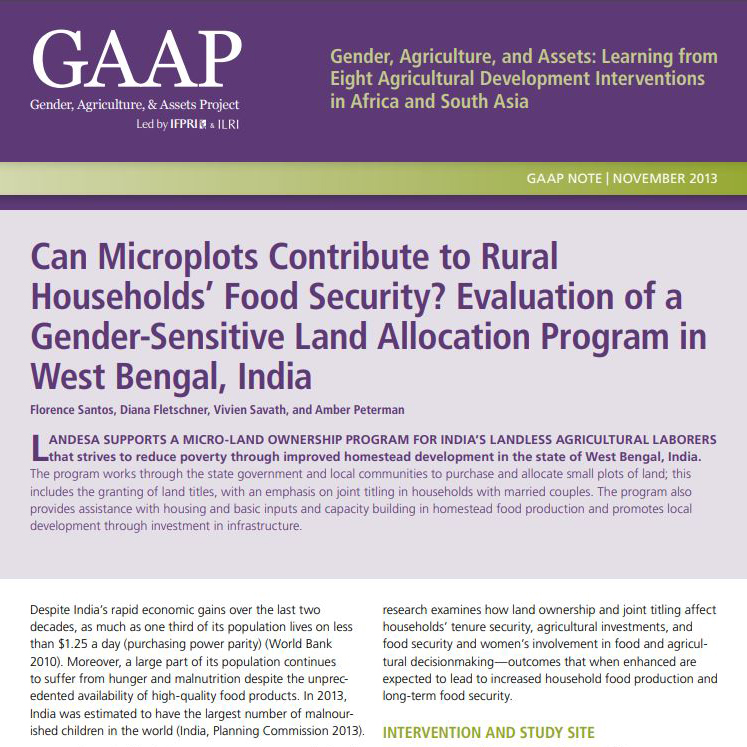
October 2014
Secure land rights are a critical, but often overlooked, factor in achieving household food security and improved nutritional status in rural areas of developing countries. This study evaluates the impact of India’s land allocation and registration program in West Bengal, a program that targets poor populations and promotes the inclusion of women’s names on land titles. We use mixed methods data collected between 2010 and 2012 to examine the program’s selection of beneficiaries and a set of outcomes that are expected to lay the foundation for future food security, as well as short term food security indicators. Our results indicate that the program’s implementation at the block level allowed for considerable variation in the processes used to select beneficiaries, to demarcate plots, to distribute titles and to provide infrastructure support. Although we were unable to detect statistically significant program effects on current household food security, we find that the land allocation and registration program has had an impact on a range of outcomes that are expected to lead to future food security: beneficiary households report stronger security, and they are more likely to take loans for agricultural purposes, to invest in agricultural improvements, and to involve women when making decisions related to food and agriculture. These effects vary with plot size—larger plots lead to larger benefits—and depend on whose names are included on the land documents; the effects are larger if women’s names are recorded on the land titles.
Authors
Florence Santos, Landesa Senior Monitoring and Evaluation Specialist
Diana Fletschner, Landesa Senior Director of Research, Monitoring and Evaluation
Vivien Savath, Former Landesa Monitoring and Evaluation Specialist
Amber Peterman, University of North Carolina in Chapel Hill Assistant Research Professor
Acknowledgements
The authors thank the Gender, Agriculture, and Assets Project (GAAP) team at the International Food Policy Research Institute (IFPRI) and the International Livestock Research Institute (ILRI) for the funding necessary to carry out this research and for their helpful comments; Cynthia Caron, Sujata Das Chowdhury, and Ikonet for providing support on the qualitative and quantitative data collections; Landesa’s program teams in West Bengal, Pinaki Halder, and Udita Chatterjee for facilitating the fieldwork; and Ashok Sircar and Santosh Kumar Jha at Landesa’s national office for providing much appreciated logistics and study design support.
Download a copy of the article for free until the end of the month at: http://authors.elsevier.com/a/1Ph9R,6yxCsJvP
Download the brief associated with it at: http://www.ifpri.org/sites/default/files/publications/gaapnote02.pdf
